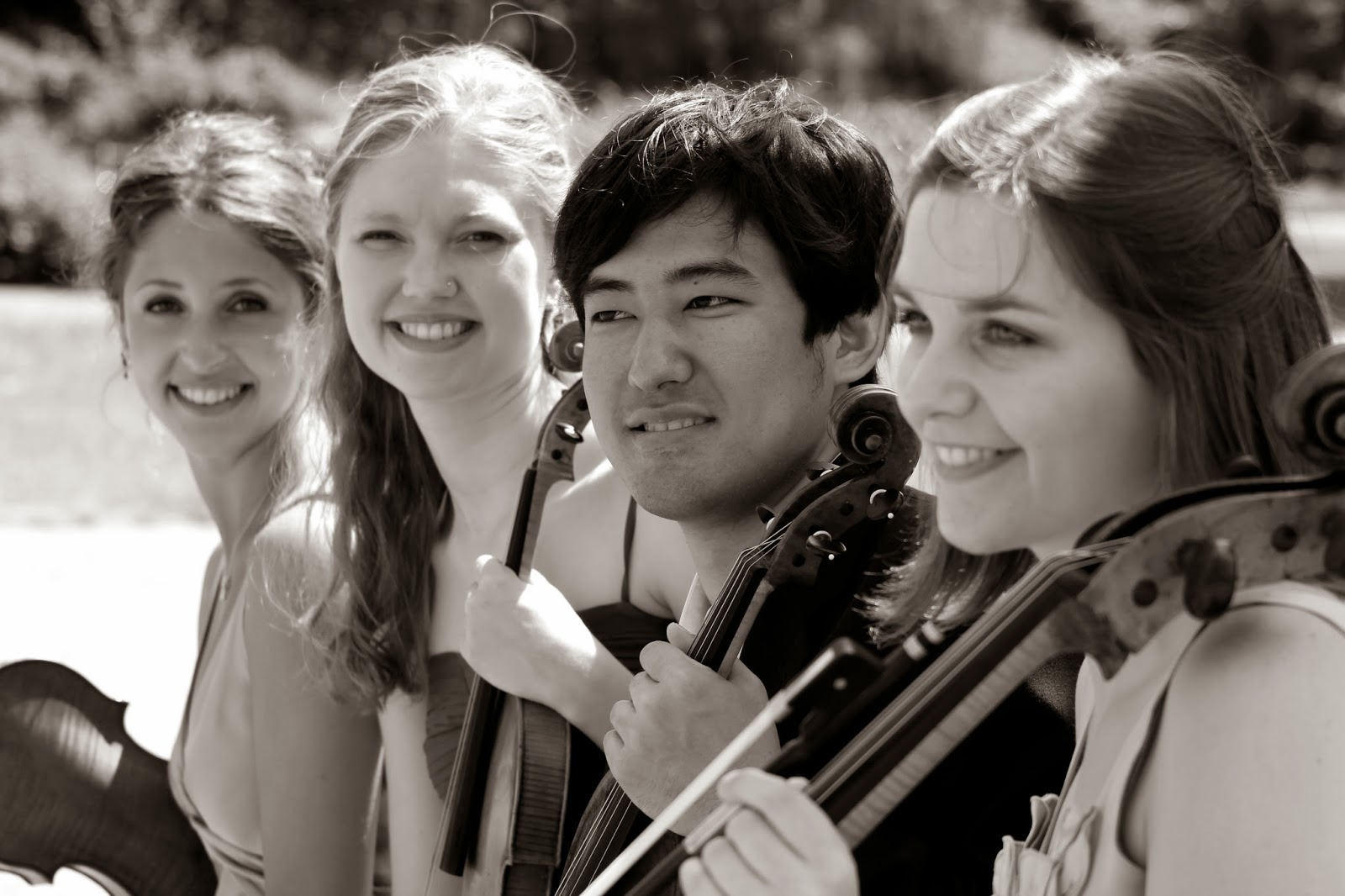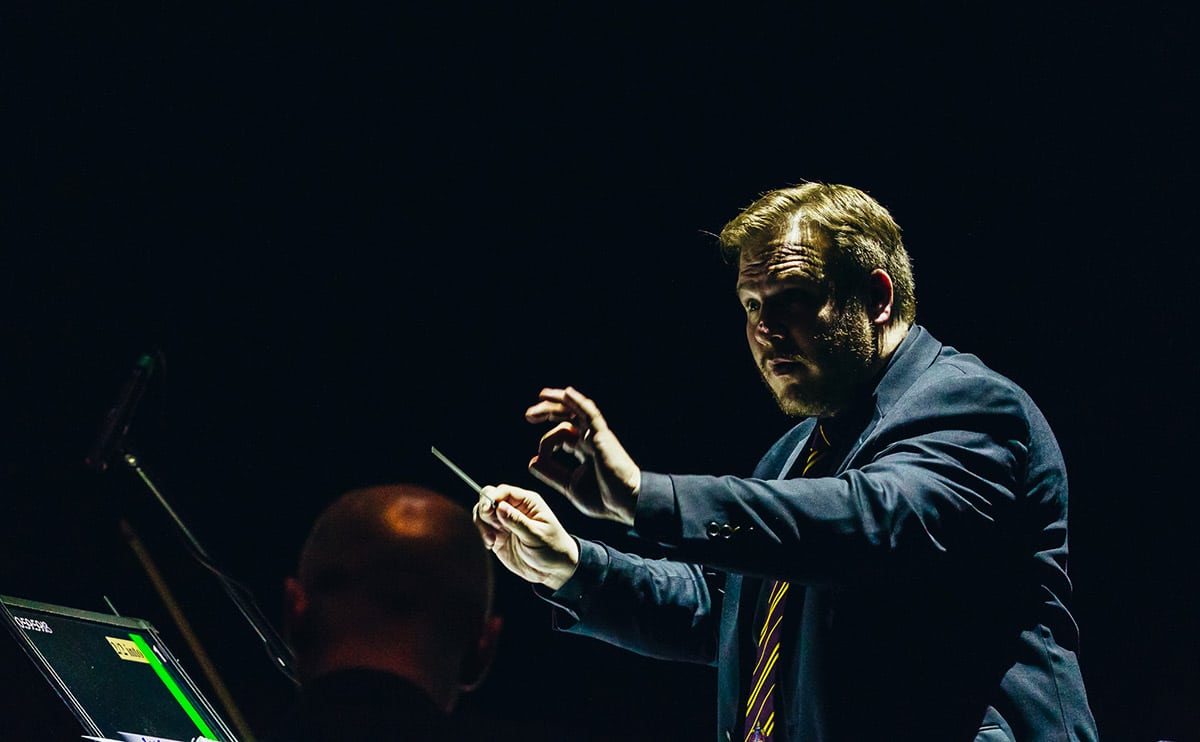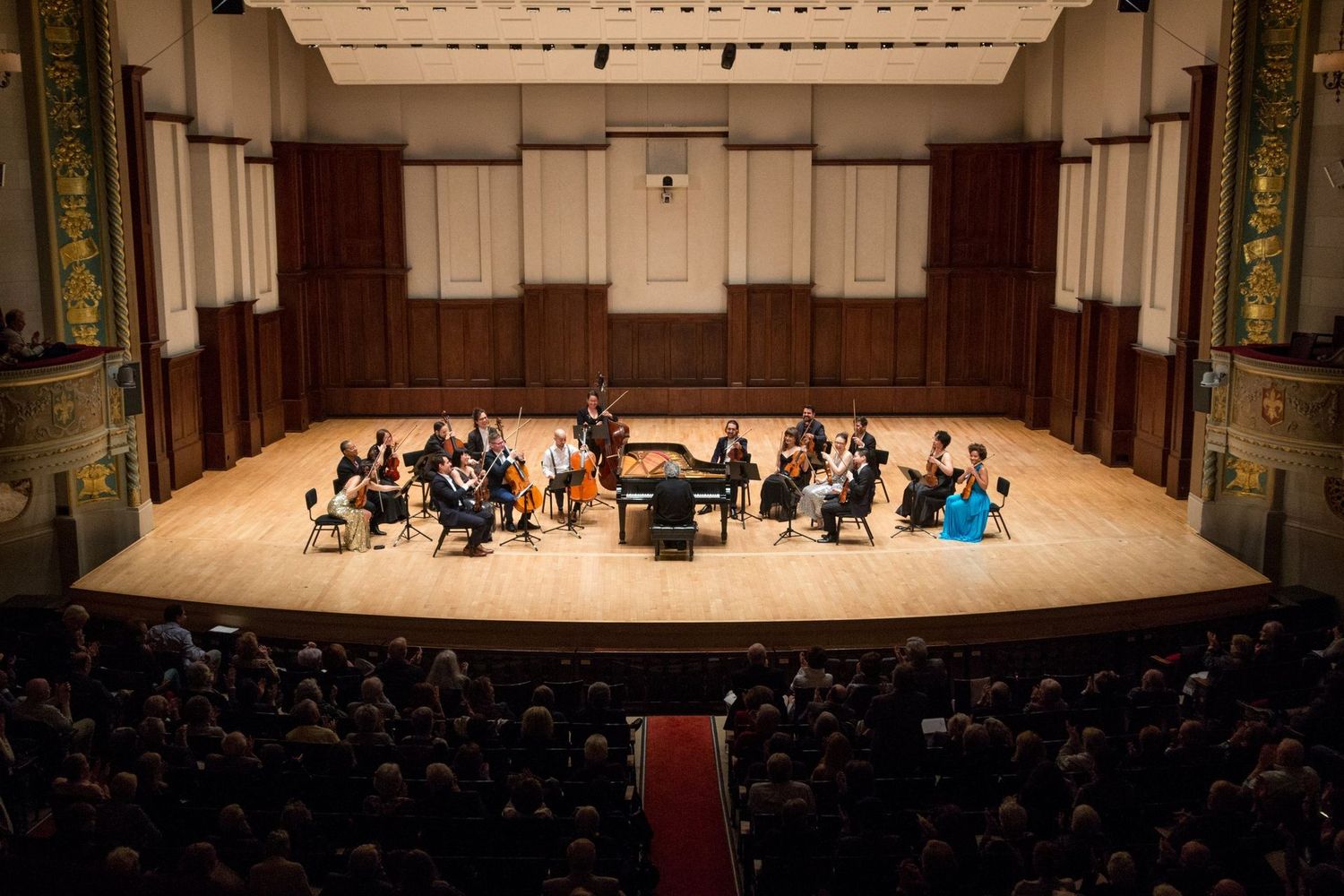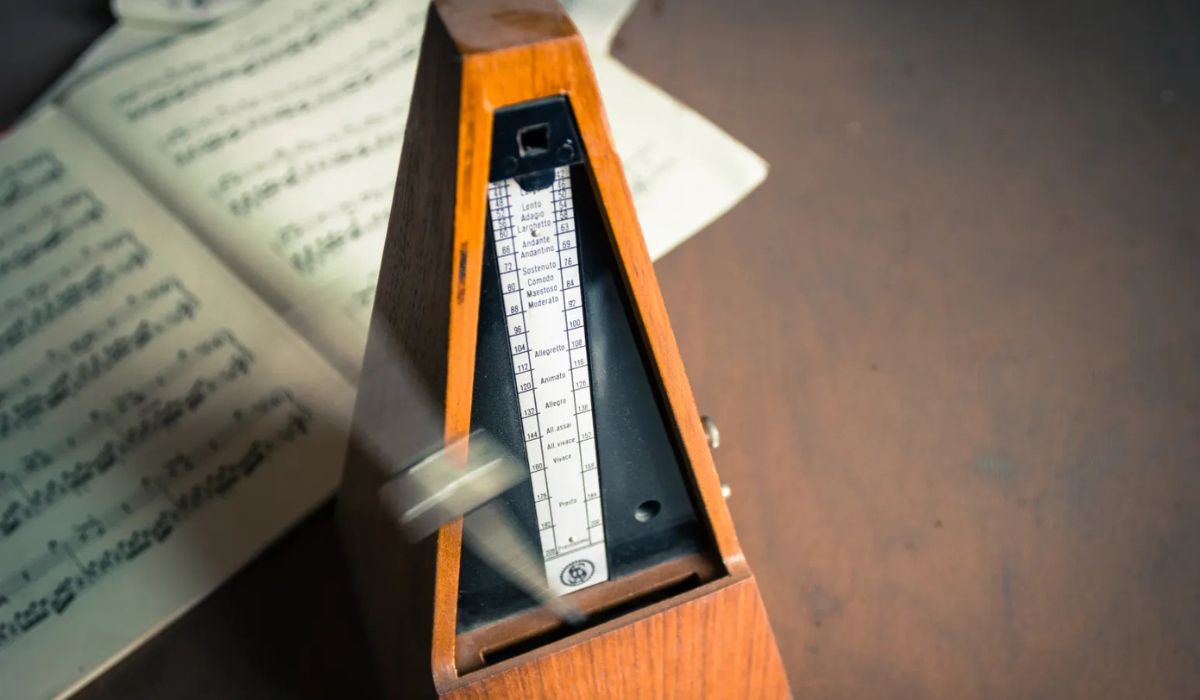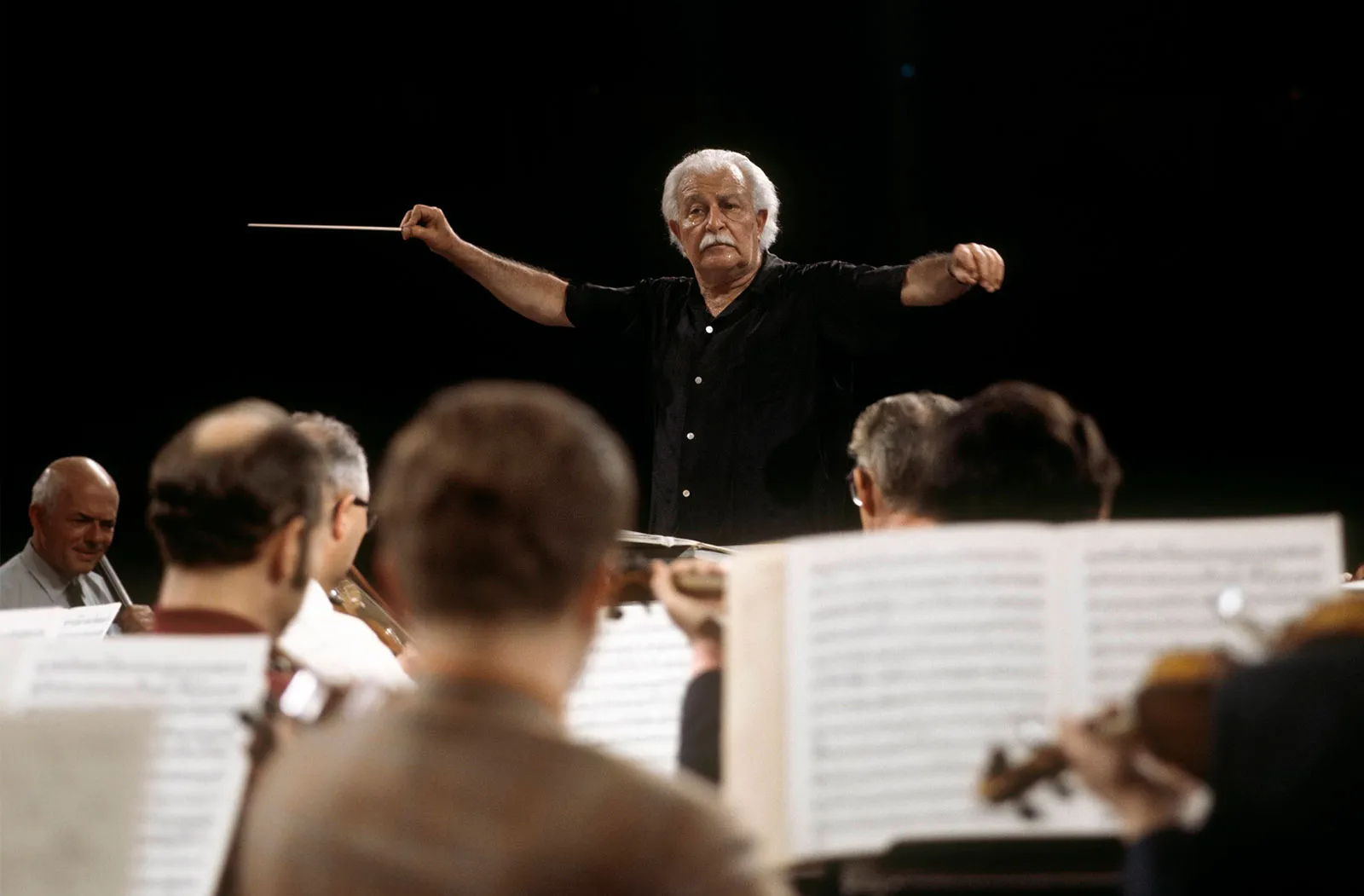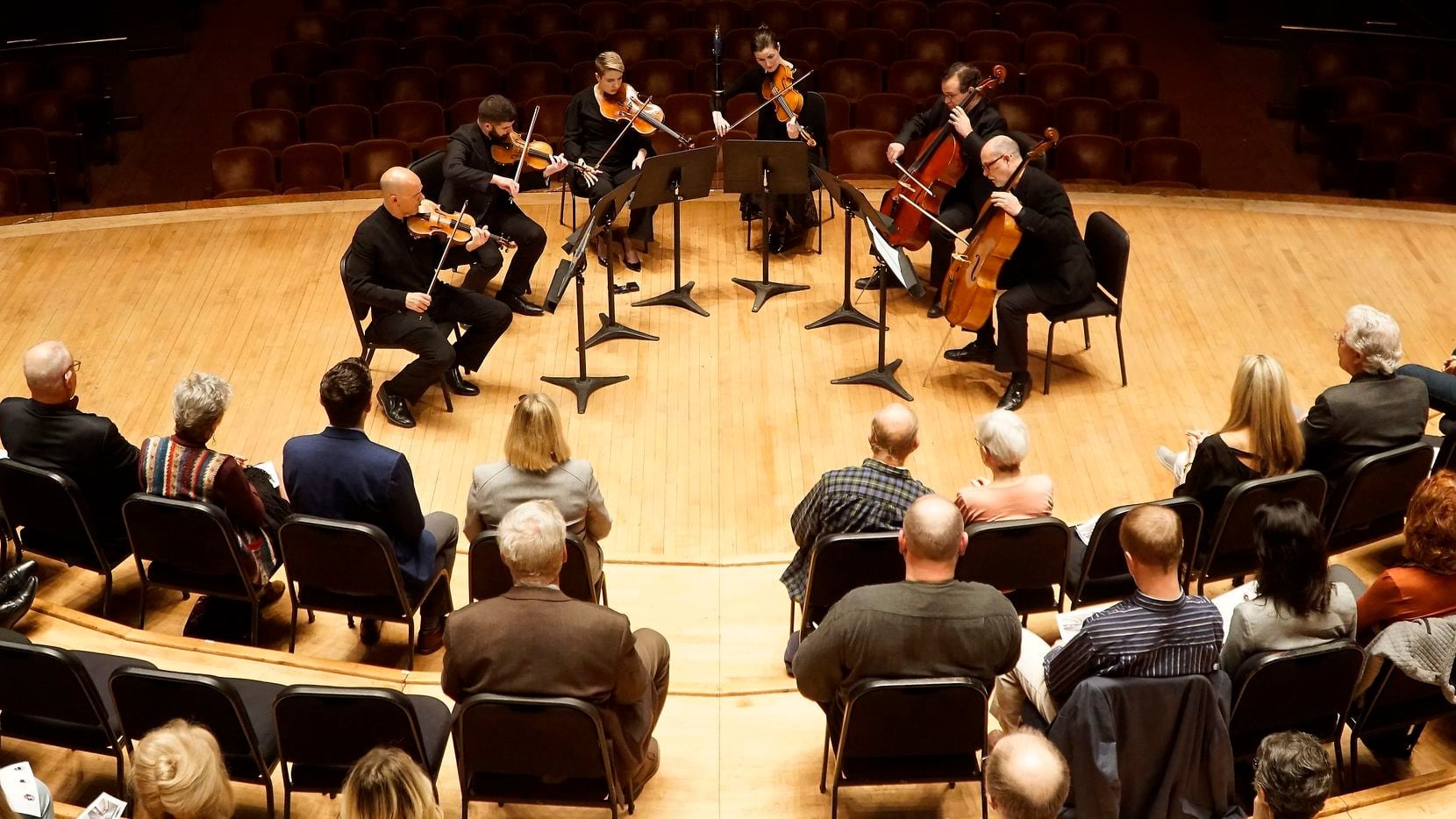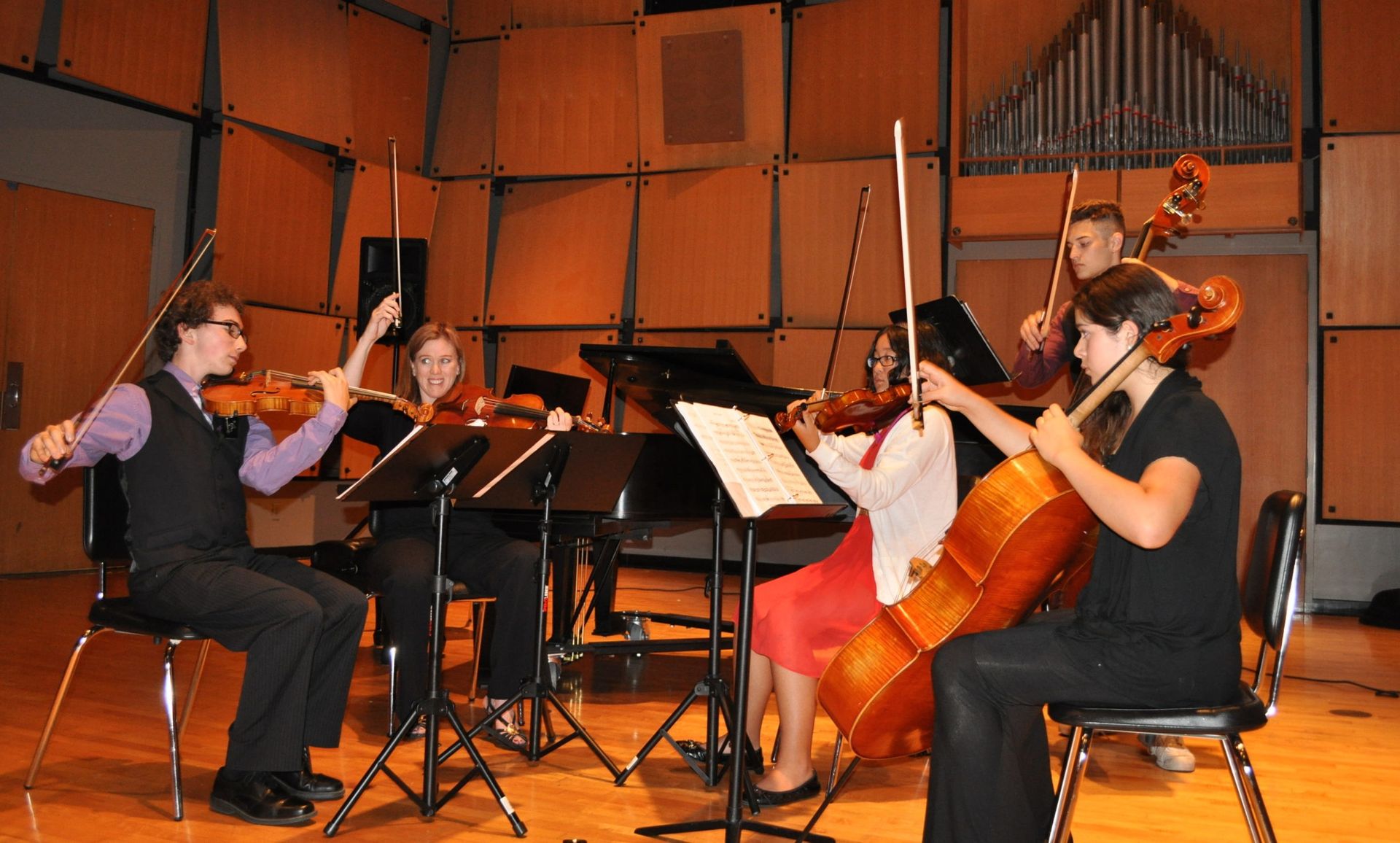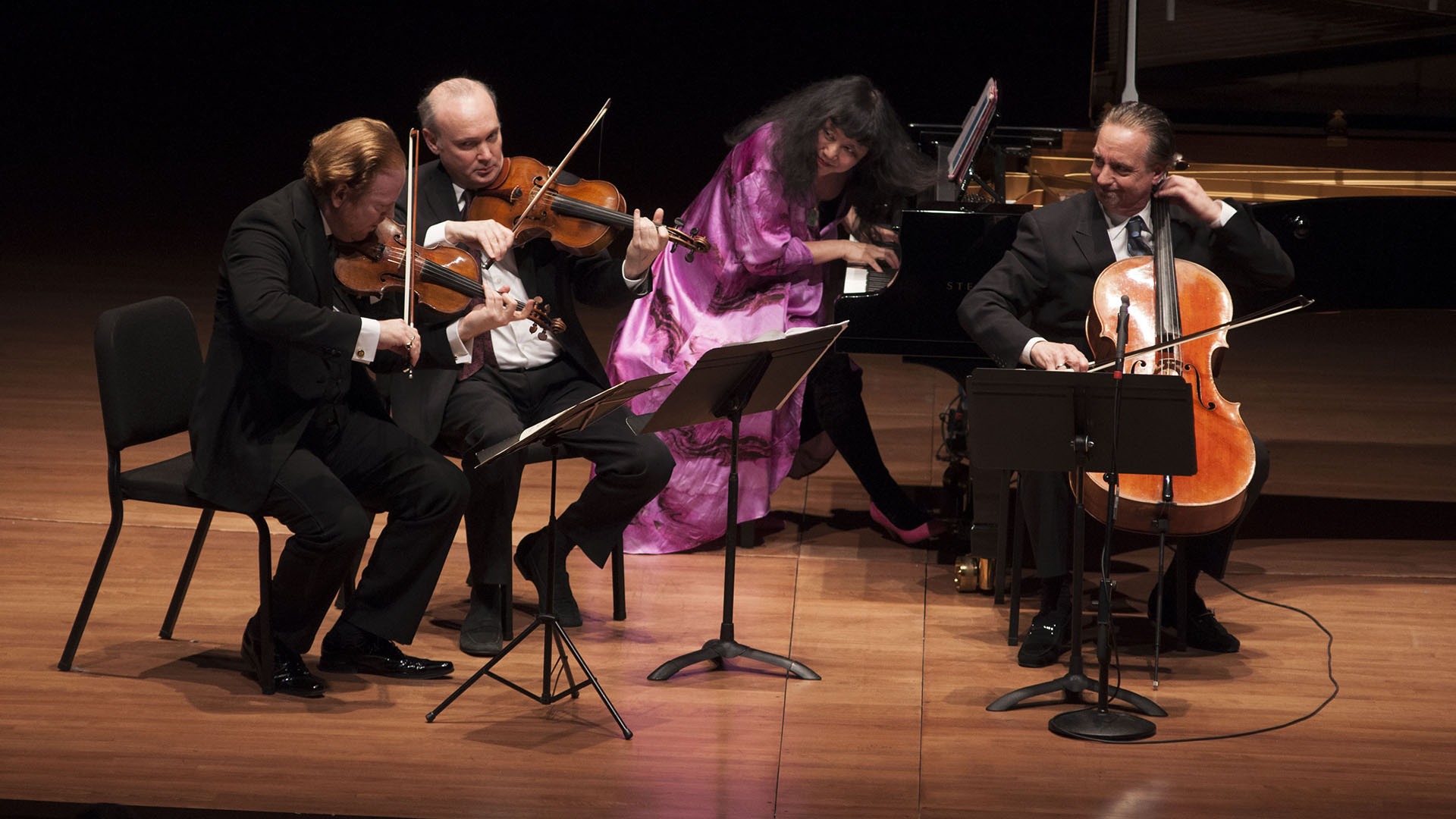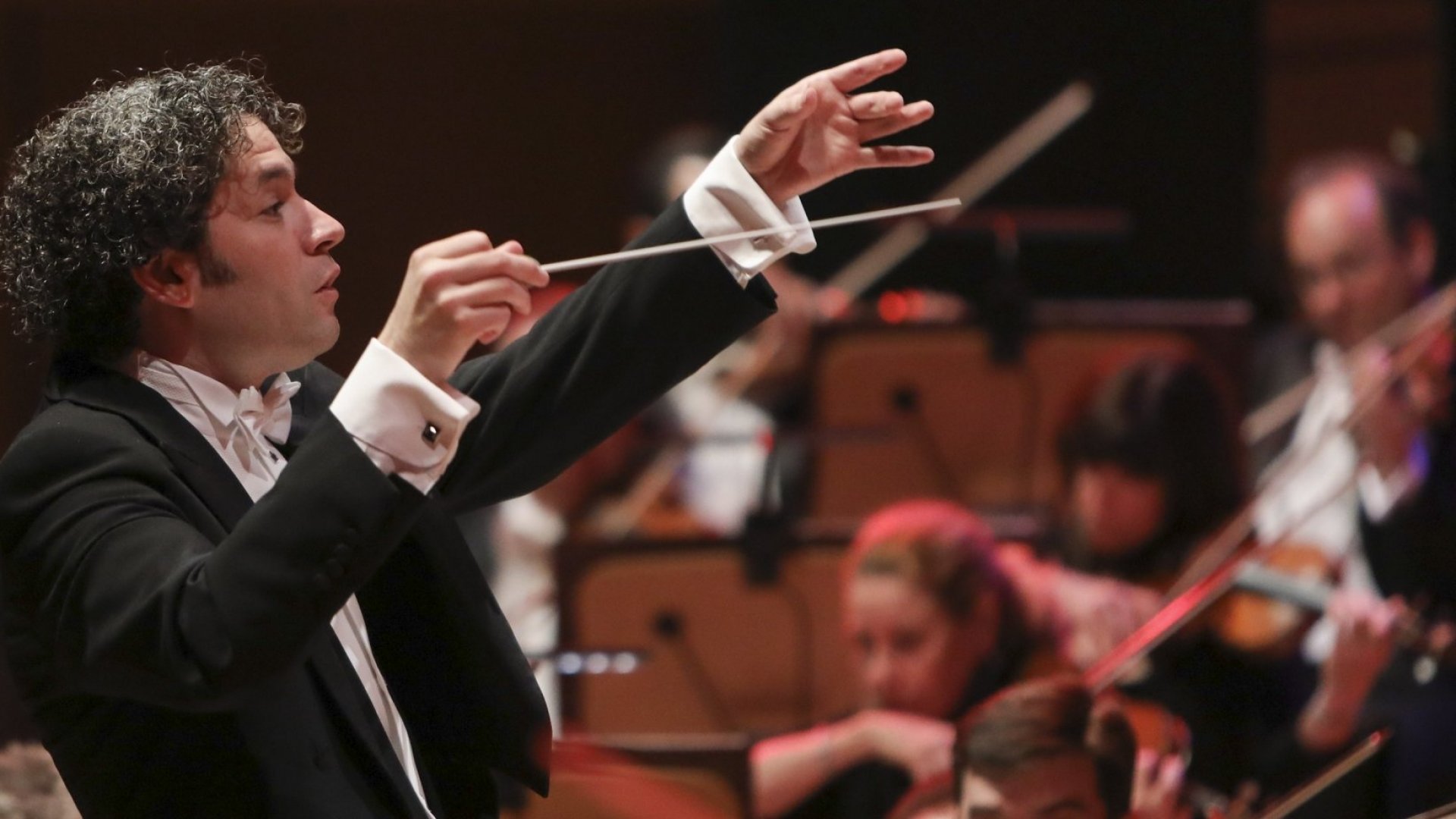Home>Events & Info>Chamber Music>Why Is A Conductor Not Used For Chamber Music?


Chamber Music
Why Is A Conductor Not Used For Chamber Music?
Published: January 4, 2024
Learn why conductors are not typically used in chamber music performances and discover the unique dynamics and collaborative nature of this intimate genre.
(Many of the links in this article redirect to a specific reviewed product. Your purchase of these products through affiliate links helps to generate commission for AudioLover.com, at no extra cost. Learn more)
Table of Contents
- Introduction
- Definition of Chamber Music
- Role of the Conductor
- Lack of Conductor in Chamber Music
- Advantages of Not Using a Conductor
- Collaboration and Communication Among Musicians
- Flexibility and Spontaneity
- Intimacy and Engagement with the Audience
- Challenges Faced by Musicians in Chamber Music
- Conclusion
Introduction
Chamber music is a unique form of musical performance that brings together a small group of musicians, typically around two to eight players, performing in an intimate setting. Unlike larger orchestral performances, chamber music does not typically involve the use of a conductor. This raises the question: why is a conductor not used for chamber music?
In order to understand this, we must first define chamber music. Chamber music refers to a genre of classical music that emerged in the 17th and 18th centuries. It is characterized by its intimate nature and the close interaction among the musicians. The term “chamber” comes from the small rooms or chambers in which this type of music was originally performed.
Traditionally, a conductor’s role in an ensemble is to lead and guide the musicians, ensuring that they stay in sync and interpret the music in a unified manner. The conductor sets the tempo, cues in the entrances, shapes the phrasing, and brings out the desired expression in the music. However, in chamber music, the absence of a conductor is a deliberate choice, and it serves a purpose.
Definition of Chamber Music
Chamber music, as mentioned earlier, is a genre of classical music that originated in the 17th and 18th centuries. It is characterized by its small ensemble size, typically ranging from two to eight musicians. The composition itself is often written for specific instruments, such as a string quartet (two violins, viola, and cello), a piano trio (piano, violin, and cello), or even less conventional combinations.
What sets chamber music apart from other forms of classical music is its intimate and collaborative nature. Unlike an orchestra, where the conductor serves as the central authority, chamber music relies on the collective interactions and communication among the musicians. Each player has a unique role to play, and their parts intertwine and interact to create a harmonious and cohesive performance.
Chamber music is often performed in small venues, such as private homes, salons, or dedicated chamber music halls. These settings offer an intimate and immersive experience for both the musicians and the audience. The close proximity of the performers to the listeners allows for a more direct and personal connection, fostering a deeper sense of engagement and musical expression.
Over the centuries, chamber music has evolved and expanded its repertoire. Composers such as Wolfgang Amadeus Mozart, Ludwig van Beethoven, and Johannes Brahms have made significant contributions to the genre, creating timeless pieces that continue to be performed and appreciated today. Additionally, contemporary composers have embraced chamber music, exploring new sounds, techniques, and expressive possibilities.
Ultimately, chamber music is a testament to the beauty of collaboration and the power of small ensembles to create intricate and captivating musical experiences. The absence of a conductor in this setting allows for a different kind of musical expression, where the musicians share the responsibility and artistic vision, resulting in a truly unique and dynamic performance.
Role of the Conductor
In larger orchestral performances, the conductor plays a crucial role in leading the ensemble. The conductor’s responsibilities encompass much more than just keeping time. They serve as the musical director, interpreter, and communicator, ensuring that the musicians are unified in their interpretation of the score and bringing out the desired expression in the music.
The conductor sets the tempo, cues the entrances of different instruments and sections, shapes the dynamics and phrasing, and guides the overall interpretation of the piece. They act as the link between the composer’s intentions and the musicians’ execution, providing guidance and feedback to achieve a cohesive and artistically satisfying performance.
Furthermore, the conductor serves as a visual and expressive guide for the orchestra. They use gestures, facial expressions, and body language to communicate musical nuances, dynamics, and changes in mood or character. This visual communication is vital in large ensembles, where the conductor’s movements help the musicians stay together and navigate complex sections of the score.
The role of the conductor extends beyond the performance itself. They are typically involved in the rehearsal process, guiding the musicians through the intricacies of the music, addressing technical challenges, and refining the interpretation. Conductors also have a deep knowledge of the repertoire and are responsible for selecting and programming the works to be performed.
Overall, the conductor serves as the focal point of the ensemble, providing leadership, direction, and artistic vision. Their presence ensures a unified and cohesive performance, allowing the musicians to work together under a single guiding force.
Lack of Conductor in Chamber Music
Unlike larger orchestral performances, chamber music often does not involve the presence of a conductor. This intentional absence serves a purpose and contributes to the unique dynamics and artistic expression of chamber music.
One reason for the lack of a conductor in chamber music is the smaller ensemble size. In a chamber music setting, the number of musicians is typically between two and eight, allowing for more direct communication and collaboration among the players. With fewer musicians, it becomes more feasible for them to interact and make adjustments in real time without the need for a conductor to facilitate.
In addition, chamber music is characterized by its intimate nature and the close relationship between the musicians. This closeness allows for a high level of communication and listening between the players. Each musician is actively engaged in not only playing their own part but also responding and reacting to the other musicians’ performances. This heightened level of musical interaction and dialogue eliminates the need for a conductor to mediate and interpret the music on behalf of the ensemble.
Furthermore, chamber musicians often have a deep understanding and familiarity with the repertoire they perform. They spend countless hours rehearsing together, developing a shared musical language and an intuitive understanding of each other’s playing style. This level of trust and mutual respect allows them to make musical decisions collectively during performances, without the need for a conductor to guide them.
The absence of a conductor also gives each musician more freedom and responsibility for their artistic choices. Without a central authority figure, each individual is empowered to interpret the music in their own unique way, bringing their own musical personality and expression to the performance. This freedom allows for a more diverse and individualistic interpretation of the music, resulting in a rich and vibrant performance.
Ultimately, the lack of a conductor in chamber music highlights the collaborative nature of the genre. It emphasizes the importance of active listening, communication, and mutual understanding among the musicians. It allows for a more democratic approach to musical interpretation, where each musician’s voice is heard and valued. This absence of a conductor in chamber music sets it apart from larger ensembles and contributes to the intimate and engaging nature of the performances.
Advantages of Not Using a Conductor
The absence of a conductor in chamber music brings forth several advantages that contribute to the unique experience and artistic expression of this genre. Here are some benefits of not using a conductor in chamber music:
- Enhanced collaboration: Without a conductor, the musicians are required to actively collaborate and communicate with each other. This fosters a deeper level of musical interaction and allows for a more democratic approach to decision-making. Each musician has a voice in shaping the interpretation, leading to a rich and dynamic performance.
- Flexibility and spontaneity: In the absence of a conductor’s strict guidance, chamber musicians have the freedom to make spontaneous musical decisions during the performance. This flexibility allows for a more organic interpretation of the music, with each player responding to the moment and adapting to the unique energy of the live performance.
- Intimate connection with the music: Chamber music performances without a conductor often create a heightened sense of intimacy and connection between the musicians and the audience. With no intermediary between the musicians and the listeners, the emotional depth and subtleties of the music can be more readily experienced, resulting in a more engaging and captivating performance.
- Encourages active listening: Without a conductor to rely on for cues and direction, chamber musicians must actively listen to each other to stay synchronized and make precise timing and ensemble adjustments. This promotes a heightened level of attentiveness and sensitivity among the players, resulting in a more cohesive and nuanced performance.
- Promotes individuality: In chamber music, each musician has the opportunity to showcase their individual artistic expression and musical interpretation. Without a conductor’s overriding influence, the unique musical personalities of each player can shine through, creating a diverse and captivating performance that highlights the individual talents and strengths of the ensemble.
These advantages contribute to the distinctive nature of chamber music and the immersive experience it offers both musicians and audiences. The absence of a conductor enhances collaboration, encourages spontaneity, fosters an intimate connection with the music, promotes active listening, and celebrates the individuality of each musician. Together, these factors create a truly unique and dynamic performance that sets chamber music apart from other forms of classical music.
Collaboration and Communication Among Musicians
Chamber music thrives on the spirit of collaboration and communication among the musicians. The absence of a conductor in this setting allows for a more direct and intimate form of musical interaction.
One of the key advantages of not having a conductor in chamber music is the enhanced collaboration among the musicians. Each player has an active role in shaping the interpretation of the music. They work together, exchanging ideas and responding to each other’s musical choices. This collaborative process allows for a deeper level of engagement and brings out the collective wisdom and artistic vision of the ensemble.
Communication becomes a fundamental aspect of chamber music performances. The musicians rely on visual cues, body language, eye contact, and subtle gestures to coordinate their timing, phrasing, and dynamics. These non-verbal forms of communication allow for a seamless and nuanced interaction, enhancing the overall musical expression.
The process of communication in chamber music extends beyond the performance itself. During rehearsals, the musicians engage in open discussions and dialogues about the interpretation of the music. They collectively decide on bowings, fingerings, articulations, and other musical details. This level of communication ensures a coherent and unified approach to the music and allows for a deeper understanding of each other’s artistic choices.
In chamber music, communication is not just limited to the technical aspects of the performance. It also involves listening and responding to each other’s musical ideas in real time. Each musician must actively listen and adjust their playing to match the nuances and dynamics of their fellow performers. This active engagement fosters a strong sense of musical empathy and allows for seamless transitions and ensemble playing.
The absence of a conductor in chamber music amplifies the need for effective communication among the musicians. It requires a heightened level of attentiveness and sensitivity to ensure that the ensemble remains cohesive and musically connected.
The collaborative and communicative nature of chamber music allows for a vibrant and dynamic musical dialogue among the musicians. Each player brings their unique perspective and contribution to the ensemble, creating a rich tapestry of musical expression. It is through this deep collaboration and communication that chamber music performances come alive, captivating both the performers and the audience.
Flexibility and Spontaneity
One of the unique advantages of chamber music performances without a conductor is the freedom and flexibility it affords to the musicians. The absence of a conductor allows for a greater sense of spontaneity and adaptability during the performance.
Chamber musicians have the freedom to make real-time decisions and adjustments as they perform. Without a conductor’s guiding hand, they are able to respond to the dynamics and energy of the moment, adapting their interpretation and expression accordingly. This flexibility allows for a more organic and dynamic performance, where the musicians can express themselves with immediacy and authenticity.
Spontaneity, as a result of the lack of a conductor, can lead to creative and unexpected musical moments. Musicians can explore different nuances, experiment with phrasing or dynamics, and take liberties with the interpretation. These spontaneous artistic choices keep the performance fresh and exciting and can lead to exceptional musical moments that might not have been possible with a conductor’s more rigid interpretation.
Furthermore, the flexibility in chamber music performances allows for subtle adjustments in timing and tempo. Musicians can react to each other’s cues and gestures, seamlessly navigating through changes in tempo or rubato. This fluidity adds an element of spontaneity and liveliness to the performance and enhances the sense of collaboration and musical dialogue among the players.
In addition, the absence of a conductor frees the musicians from the constraints of a predetermined plan. They have the ability to shape the music in real time, responding to the dynamics of the moment and the energy and interaction among the ensemble. This spontaneous approach to interpretation creates a unique and engaging experience for both the performers and the audience, reaffirming the liveliness and immediacy of the music.
Embracing spontaneity and flexibility in chamber music performances can lead to exciting musical discoveries and unexpected moments of brilliance. It allows the musicians to tap into their artistic instincts and explore the full range of their individual and collective musical expression. Without the constraints of a conductor, chamber musicians can fully embrace the joy and spontaneity of the musical journey, resulting in performances that are vibrant, dynamic, and filled with imaginative musical possibilities.
Intimacy and Engagement with the Audience
Chamber music performances, without the presence of a conductor, create a unique sense of intimacy and allow for a deep engagement between the musicians and the audience. The absence of a conductor brings the performers closer to the listeners, fostering a more personal and immersive experience.
In chamber music, the small ensemble size and the proximity of the musicians to the audience create an intimate setting. The audience members can observe the intricate interactions and nuances of the musicians up close, experiencing the music in a more direct and intimate way. This closeness allows for a heightened emotional connection and a greater appreciation of the musicians’ artistry and technique.
Without a conductor as an intermediary, the musicians have the opportunity to engage with the audience on a more personal level. They can communicate their musical ideas and interpretative choices directly through their performance. The absence of a conductor’s interpretations also allows for a diversity of perspectives and artistic expression among the ensemble, further enriching the experience for the listeners.
The intimate nature of chamber music performances invites the audience to actively engage with the music. They can witness the subtle cues and non-verbal communication between the musicians, gaining insight into the collaborative process. This involvement promotes a deeper level of attentiveness and appreciation for the intricacies of the performance.
Chamber musicians, without the presence of a conductor, are more open to interact with the audience during performances. They can acknowledge the applause, exchange smiles or brief nods, and establish a connection with the listeners. This interactive element creates a sense of shared experience and enhances the overall enjoyment of the concert.
Moreover, chamber music performances often take place in smaller venues, such as intimate concert halls or even private homes. These settings provide a cozy and inviting atmosphere, allowing for a closer connection between the performers and the audience. The intimate surroundings create an ambiance where every note played and emotion expressed can be felt deeply, resulting in a more profound and engaging musical encounter.
Overall, the absence of a conductor in chamber music performances enhances the intimacy and engagement between the musicians and the audience. The close proximity, direct communication, and shared experience create a profound and immersive musical journey that captivates and connects all those present in the performance space.
Challenges Faced by Musicians in Chamber Music
While chamber music offers a unique and rewarding musical experience, it also presents specific challenges for the musicians involved. The absence of a conductor in chamber music performances requires the ensemble members to navigate these challenges collectively and rely on their own musical skills and communication.
One significant challenge faced by chamber musicians is the need for meticulous ensemble playing. With a smaller number of musicians, every individual must be acutely aware of their fellow players, frequently exposed and sensitive to timing, dynamics, and balance. Achieving a cohesive and unified sound in such an intimate setting requires precise listening, precise coordination, and constant adjustment to achieve a seamless ensemble blend.
Chamber musicians also face the challenge of balancing individual expression with collective interpretation. Each musician brings their unique musical personality and interpretation to the ensemble, and finding the right balance between personal expression and the overall interpretation of the piece requires ongoing communication and compromise. It is a delicate process of negotiation and musical dialogue to ensure that the collective vision of the ensemble is realized while maintaining the artistic integrity of each individual musician.
Another challenge encountered in chamber music is the need for technical proficiency and versatility. With fewer musicians, each individual player typically has a more demanding and exposed role. They must possess a high level of technical skill to navigate challenging passages and execute intricate musical nuances. Additionally, chamber music composers often write parts that demand a wide range of expressive techniques and styles, requiring musicians to be versatile and adaptable in their playing.
The absence of a conductor also places a greater responsibility on the musicians to shape the interpretation and overall direction of the performance. This requires a deep understanding of the music, meticulous preparation, and effective communication throughout the rehearsal process. The musicians must take the initiative to solve interpretative problems, make musical decisions, and find a shared vision without the guidance of a conductor.
Furthermore, the vulnerability of performing without a conductor places an increased emphasis on individual accountability and focus. Each musician must be responsible for executing their part flawlessly, as any mistake or inconsistency is more noticeable in a chamber music setting. The need for concentration and engagement is heightened, ensuring that every member of the ensemble remains fully present and responsive throughout the performance.
Despite these challenges, chamber music offers a unique and fulfilling musical experience for both performers and listeners. Embracing these challenges through open communication, attentive listening, and collaborative effort allows chamber musicians to overcome obstacles and create exceptional performances that showcase the distinctive beauty of this genre.
Conclusion
Chamber music, with its small ensemble size and absence of a conductor, offers a distinct and captivating musical experience. It is a genre that thrives on collaboration, communication, and a deep musical connection among the musicians.
Through this article, we have explored the reasons why a conductor is not typically used in chamber music performances and the advantages it brings. The lack of a conductor allows for enhanced collaboration and communication among the musicians, promoting a democratic approach to interpretation and decision-making.
Chamber music also benefits from the flexibility and spontaneity that arise in the absence of a conductor. This freedom allows the musicians to respond in the moment, creating vibrant and dynamic performances that are unique to each rendition.
The intimate nature of chamber music, without a conductor, fosters a deep engagement with the audience. Listeners become immersed in the close interactions and nuances of the musicians, forming a personal and meaningful connection with the performance.
However, chamber music also presents its own set of challenges for the musicians. Meticulous ensemble playing, balancing individual expression with collective interpretation, technical proficiency, and individual accountability are just a few of the obstacles that must be navigated to achieve a successful chamber music performance.
In conclusion, chamber music without a conductor is a genre that celebrates collaboration, communication, and intimate musical dialogue. It invites musicians and audiences to engage in a profound musical journey, where each player’s voice is heard and valued. Through the challenges and rewards, chamber music continues to captivate and inspire both performers and listeners, standing as a testament to the power of collective musical expression.

